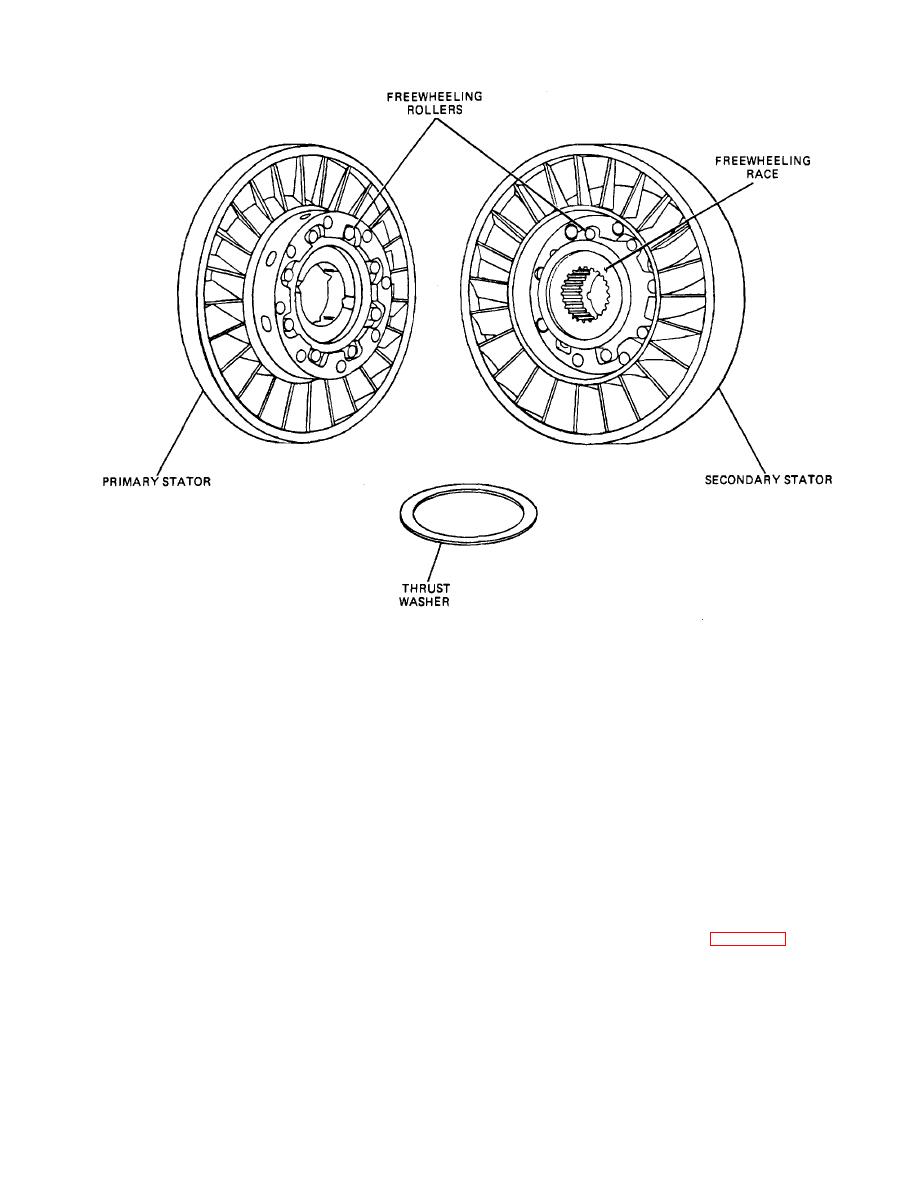
| Tweet |

Custom Search
|
|

|
||
 TM 9-8000
Figure 21-18. Primary and Secondary Stators Showing Freewheeling Rotors.
h. Because torque converters vary consider- ably In
faces of the secondary pump vanes. The secondary
pump stops overrunning and slows to primary pump
design, the amount of torque multiplication they can
speed. It now helps the primary pump and the two work
achieve also varies. Practical limits seem to be 5:1. Many
together as a unit. Under these conditions, the torque
torque converters provide satisfactory operation with a
converter functions like a fluid coupling.
much lower torque multiplication (some passenger car
units provide less than 2.5:1).
g. While the above description covers torque
converters generally, some torque converters have
i. Many torque converters have oil coolers. Because the
more secondary members (aside from the pump and
oil is subjected to violent agitation and motion, it
turbine) than others. The unit de- scribed Is a five-
becomes hot. The oil cooler acts much like the radiator in
member torque converter, with a pump, turbine, primary
liquid-cooling systems. As oil passes through the
stator, secondary stator, and secondary pump. Other
radiator, it gives up heat and emerges at a lower
torque converters have only four members, while still
temperature.
others have only three. In every case, the added units
have the job of reversing the direction of oil movement as
21-9. Lockup Torque Converter (Fig. 21-19). Even at
the oil leaves the turbine when there Is considerable
normal highway speeds, there is a certain amount of
difference in turbine and pump speeds.
slippage In the torque converter. Some vehicles have a
frictional lockup clutch incorporated in their torque
converters to eliminate this
TA233689
21-17
|
||
 |
||